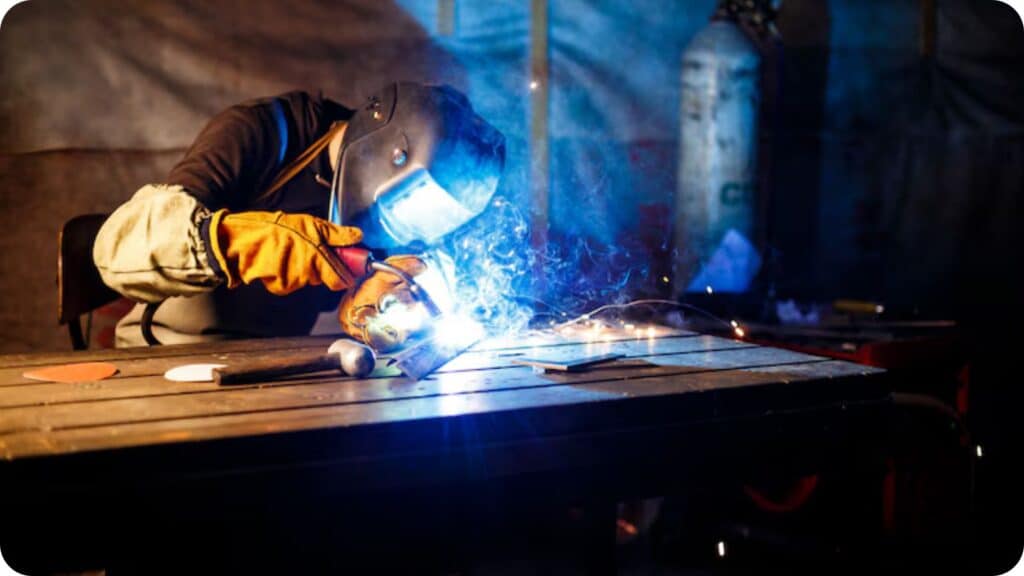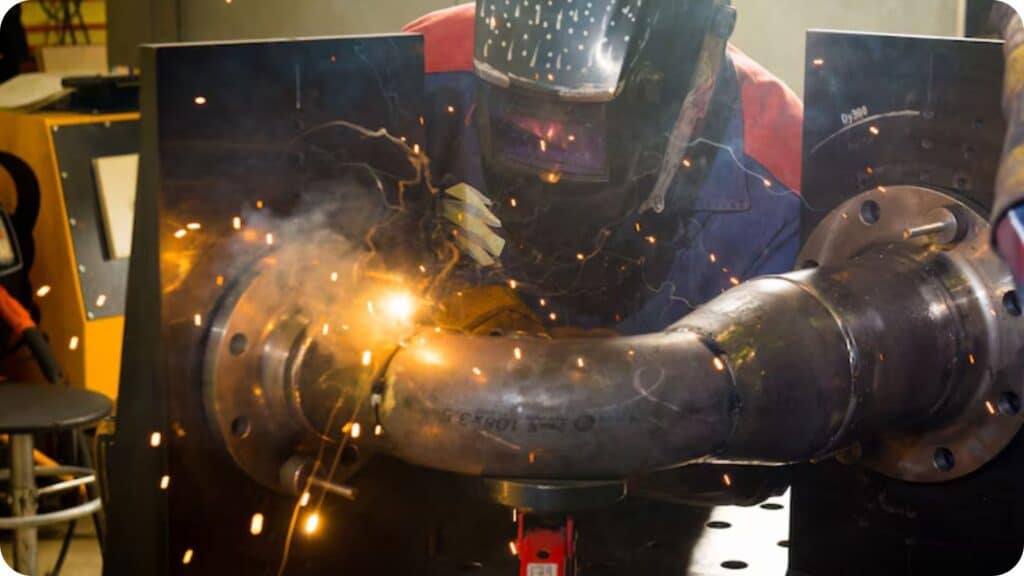Top Welding and Assembly Innovations Revolutionizing Industry in 2025-26
Top Welding and Assembly Innovations Revolutionizing Industry in 2025-26: In the heart of Saudi Arabia’s rapidly growing industrial economy, ASKA Solution continues to lead the charge by embracing advanced technologies and setting new standards in welding and assembly innovations. As we move through 2025 and into 2026, industries are seeing a paradigm shift driven by automation, artificial intelligence, sustainable practices, and smart fabrication systems.
To remain competitive in sectors like oil & gas, construction, power generation, and manufacturing, industrial firms in Saudi Arabia must adopt the latest innovations in welding and assembly processes. This blog explores the top game-changing trends and technologies that ASKA Solution is using to enhance quality, reduce costs, and improve operational efficiency, while maintaining a strong focus on safety, responsibility, and environmental sustainability.
Table of contents
Why Welding and Assembly Innovation Matters in 2025–26
The next two years will be pivotal for industries across Saudi Arabia. Vision 2030 continues to drive large-scale infrastructure and industrial development. Companies must modernize fabrication workflows to keep up with rising demand, strict environmental regulations, and the need for precision in large-scale projects.
At ASKA Solution, our investment in innovation ensures:
- Higher productivity
- Consistent welding quality
- Improved worker safety
- Lower material waste
- Compliance with national and international standards

Let’s dive into the top trends shaping welding and assembly in 2025–26.
Read Also: How to Improve Your Welding and Assembly Workflow for Maximum Efficiency
1. AI-Powered Welding Systems
Artificial Intelligence (AI) is transforming traditional welding processes into intelligent operations. AI-integrated welding machines can now:
- Auto-adjust parameters like voltage, amperage, and wire feed speed
- Detect anomalies and suggest real-time corrections
- Perform predictive quality control by analyzing weld patterns
ASKA’s Edge:
ASKA Solution has begun integrating AI-driven control systems into MIG and TIG welders, allowing us to reduce rework rates by over 30% and ensure precise, repeatable results across complex projects in the petrochemical and construction industries.
2. Collaborative Welding Robots (Cobots)
In 2025, cobots will become a staple in advanced fabrication environments. Unlike traditional industrial robots, cobots work alongside human welders to improve productivity without replacing jobs.
Key Benefits:
- Programmable in minutes using simple interfaces
- Ideal for low-volume, high-variation tasks
- Enhance worker safety by handling repetitive or hazardous tasks
ASKA’s Implementation:
ASKA Solution uses cobots for light structural assemblies and precision welding in compact environments. Our operators can program cobots to assist with parts positioning, tacking, and quality inspection, reducing overall welding time and enhancing accuracy.
3. Augmented Reality (AR) Welding Training
Traditional welding training can be time-consuming and material-intensive. That’s where AR-based training steps in, simulating welding conditions in a digital environment.
Advantages:
- Hands-on practice without material waste
- Real-time feedback on angle, speed, and technique
- Faster onboarding of new welders
ASKA’s Training Strategy:
We’ve implemented AR-based learning modules to upskill Saudi welders, especially in remote or rural regions. This ensures consistent standards across projects, regardless of location or manpower availability.
4. Friction Stir Welding (FSW) for Lightweight Metals
FSW is emerging as a go-to technique for welding non-ferrous metals like aluminum and copper, crucial for industries focusing on lightweight construction and energy efficiency.
Benefits:
- Solid-state process (no melting) means lower distortion
- Ideal for aerospace, automotive, and electronics applications
- Produces strong, defect-free welds
ASKA Solution is one of the early adopters of FSW in the region, using it for components in renewable energy systems and high-performance machinery.
5. 3D Metal Printing in Assembly and Prototyping
Additive manufacturing, or 3D metal printing, is no longer futuristic—it’s becoming a reality in welding and assembly shops.
Use Cases:
- Fabrication of custom jigs and fixtures
- Quick prototyping of replacement parts
- On-site part production in remote industrial areas
Our Approach:
ASKA Solution uses 3D printing for rapid prototyping and low-volume parts manufacturing. This reduces lead times and logistics costs, especially for clients in isolated oil and gas installations.
6. IoT-Enabled Welding Monitoring Systems
The Internet of Things (IoT) is revolutionizing how welding operations are monitored and controlled. Sensors embedded in machines provide:
- Real-time analytics on machine health
- Automated logging of parameters for compliance
- Alerts for maintenance and operational errors
Impact at ASKA:
We use smart sensors and cloud dashboards to track weld quality, energy usage, and operator performance across our facilities. This helps in predictive maintenance, avoiding costly downtimes, and maintaining ISO-compliant traceability.
7. Sustainable Welding Practices
Environmental sustainability is a key pillar of Saudi Arabia’s Vision 2030. ASKA Solution is committed to eco-friendly welding practices that align with national goals.
Green Initiatives:
- Use of low-emission fluxes and wires
- Adoption of energy-efficient inverter-based welding machines
- Recycling of metal scraps and the use of renewable energy in operations
We’ve reduced our carbon footprint significantly through cleaner energy use and smart fabrication planning, contributing to a more sustainable Saudi industrial ecosystem.
8. Digital Twin Technology in Assembly Planning
Digital twins are virtual replicas of real-world assembly setups. These simulations allow teams to:
- Optimize workflows before physical work begins
- Predict outcomes and avoid design flaws
- Reduce trial-and-error in plant installation and assembly
ASKA engineers use digital twins to simulate complex equipment installations. This ensures first-time-right execution, saving time, materials, and labor.
9. Advanced Safety Technologies for Welders
Worker safety remains paramount. In 2025–26, we’re seeing advanced wearables and monitoring systems that protect welders from hazards.
Technologies Include:
- Smart helmets with auto-darkening lenses and AR guidance
- Wearable health trackers to monitor fatigue and posture
- Real-time gas and heat detection systems
At ASKA Solution, we’ve deployed smart safety gear across all projects to minimize incidents and promote a culture of accountability and well-being.

Why ASKA Solution is the Future of Welding and Assembly in Saudi Arabia
As an industrial leader deeply rooted in Saudi Arabia, ASKA Solution is more than just a service provider—we are a technology-forward, quality-driven partner for the region’s most ambitious projects.
What We Offer:
- Certified welders and engineers
- Turnkey fabrication, welding, and assembly solutions
- On-site and off-site execution capabilities
- Full compliance with SASO, ISO, and GCC standards
- Cutting-edge R&D and prototyping lab for custom solutions
Final Thoughts
The future of industrial welding and assembly is smarter, safer, and more sustainable. From AI-powered welding and robotic cobots to green practices and digital simulations, the innovations of 2025–26 are setting new standards in Saudi Arabia’s industrial landscape.
ASKA Solution remains committed to embracing these technologies with a strong focus on human expertise, operational efficiency, and environmental responsibility. We invite industries across the Kingdom to partner with us as we build a future of innovation, precision, and excellence.











Add comment
You must be logged in to post a comment.